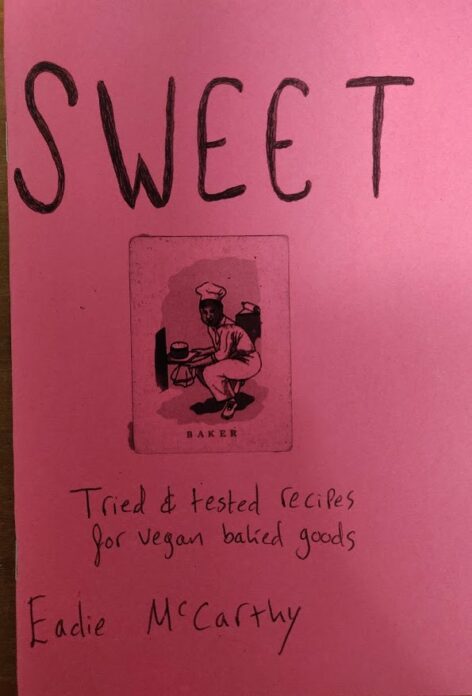SIC 2
£4.56
The second issue of Sic, international journal for communisation, from February 2014 with articles about the struggle against French pension reform, “the era of riots” and more.
Only 2 left in stock
Description
Anti-editorial for the second issue of Sic, with the background of the economic crisis.
Crisis has become a household word and the attack on the value of labour power an everyday reality. Such an attack had already been stamped on capitalism’s genetic code by the restructuring of the ’70s–’80s, but the crisis of restructured capitalism gave it an enormous impetus. From struggles of waged workers anxiously demanding to remain such and mobilisations of pensioners defending their survival, to the outburst of rage of the ‘feral class’ in developed countries, to violent workers’ riots in the South-East Asian global factory, and all the way through to the Arab Spring and its aftermath, hard evidence of the continuing conflictuality of social reality forces even the most unrepentant end-of-history sopranos to refresh their repertoire. Admittedly, not everything bathes in perfection. But it would seem that there is good news too: nobody has to worry about where this world is going, it is a one-way street, just keep on going. Some changes in management personnel are graciously offered, the persons reciting the ‘no alternative’ mantra can always be renewed and even bear the socialist flavour. Of course, the remnants of a once optimistic citizenism keep formulating ‘proposals’ – ever less far-reaching, ever more restrained – begging capitalism to mend its ways, but nobody seems to take these noble souls seriously enough, since they dispose of no high-placed interlocutor with a receptive ear. Still, there are struggles, outbursts, riots, serving as a reminder that class struggle is always there and that capital, today no less than yesterday, is a ‘moving contradiction’. Hand in hand with it, the critical theory of its demise is being produced: history in the making is also the making of theory.
Communisation is no longer being perceived as an exotic beast, and it even tends at times to become a fashionable word. Present-day struggles highlight the end of the classical workers’ movement, together with its ambition to take the supposedly good-by-nature core of the economy away from voracious capitalist predators and run it itself. It is almost obvious that the world of our days, matter and soul alike, is the world actually produced by and for capital; that, therefore, workers and their products would have never existed as such if capital had not called them into existence in the first place; that working people’s demands have nowadays become asystemic or, in other words, a scandal akin to high treason; that proletarians are forced to defend their condition against capital but, in this struggle, actions that hurt capital are also actions that tend to call into question the proletarian condition; that communism cannot possibly be conceived as a program to be realised, but only as the historical product of proletariat’s struggle against capital and, at the same token, against its own class belonging; etc., etc. All this is reassuringly easy to show, almost worryingly so in fact.
Logical obviousness is not the stuff reality is made of. The extreme segmentation of the proletariat in restructured capitalism can easily blur the distinction of who fights for what, and it is only a meagre consolation that the ultimate outcome cannot but be capital’s victory or destruction. On another score, we are no longer in the presence of a central confrontation between capital and labour amidst pre-capitalist or proto-capitalist social strata which might support or not support either of the protagonists. The whole of society has been taken over and reproduced by capital, and this means, among other things, that various middle strata, salaried or otherwise, cannot but be directly involved. In the really globalised world of restructured capitalism unification is only achieved by the construction of differences whose interrelation is conducive to the desired unifying result – targets being adapted or reset as the actual configuration of forces takes form. Zoning among regions of the world and within each region and each country seems much less stable than what, at some point in time, appeared as a well arranged fractalisation of the world, with its inevitable glue of authoritarianism and slaughter. In a context of protracted crisis, proletarians strive for survival and various middle strata strive to avoid proletarianisation and marginalisation, while the internecine strife of various capitals tends to indefinitely hesitate between two ‘pure’ but equally impossible outcomes: maintaining the instant global mobility of capital while at the same time postponing the massive devalorisation needed for any sort of fresh start; falling back into the warm embrace of states or blocs of states ready to decisively weigh, via bombers, tanks, secret services and all the paraphernalia, on the ever-renewed game of the appropriation of globally produced surplus value. The ‘normality’ of restructured capitalism was pointing towards an unimpeded global fluidity of capital and a repressive management of national spaces through states whose only really national element would be the ideology of their repression of the internal enemy. Its crisis is pointing to the practical difficulty of achieving a moving equilibrium: wide masses produced by both ‘developed’ and ‘developing’ capitalism as surplus population are showing no particular enthusiasm to disappear from the face of the earth, through a downward spiral of misery, just because capitalism tells them to oblige; numerous middle strata, from Egypt to the United States, are objecting to their squeezing by dominant capitals, being sometimes ready even to hit the streets; and, most importantly, in proletarian struggles the weakening or absence of mediation mechanisms is made manifest and the only dilemma posed seems to be outright confrontation or unconditional surrender.
The core of the capitalist powerhouse is exploitation of one class by another and, in this process, their reproduction as a class of exploiters and a class of exploited and the reproduction of the whole of capital’s society. Every cycle of struggles constructs the content of revolution adequate to a historically produced class configuration, and also of the counter-revolution corresponding to it. A victorious counter-revolution concluding a cycle of struggles is also a restructuring in view of a new cycle of accumulation: there is no such thing as a set of ‘objective conditions’ getting ‘ripe’ and pronouncing a verdict which would just have to wait a bit for the formality of its execution. The stuff reality is made of is class struggle, but not in a supposedly pure form: if any ‘purity’ is to exist at all, it will have to be historically produced by this very class struggle, in ways that constitute a breach from the routine cycle of capital’s reproduction. There is no linear development from present struggles to revolution, but present struggles, even through their limits and impossibilities, are the only anchor of the theory of communisation. The second issue of Sic is decisively focused on a critical appraisal of struggles of varying geographical locations and content; a discussion of communist measures may serve as a theoretical counterpoint; looking into the concept of conjuncture will deal with the necessary leap away from the internal causality chain of capital’s reproduction.
Sic is an international theoretical project, not a homogeneous group. Differences of opinion are welcome and eagerly put to discussion: they should come as no surprise. However, a common ground does exist, and it does differentiate Sic from other currents. For example, a transhistorical and teleological understanding of class struggle, which turns its back on any periodization of its content, will not be at home here; the conception of ever recurring proletarian assaults, identical to each other and with no actual history in between, belongs to those ready to interpret the possibly good one just like the others, with the only difference that it was successful instead of unsuccessful; the ‘proposal’ (whom to?) of models of society which would be ‘better’ than the existing one is none of our preoccupations; the faith in the demarcation and extension of a communist terrain, in a communist rodent diving into the capitalist cheese and gradually eating it away, is not ours.
Other than that, Sic is an open project. Openness is of course no panacea, and a helpful mutual explanation and understanding is not a specialty of the society we all are part of. A few months ago, the members of the French theoretical group Théorie Communiste (TC) decided to withdraw from Sic. This development was particularly important, as the theoretical elaboration produced by TC had been the cornerstone for Sic’s constitution. However, life goes on, and the proof of the pudding is certainly in the eating: the ability of Sic to host a creative collective functioning and theoretical elaboration will be the only decisive criterion for the future of the project (apart from any more general developments, needless to say). Withdrawal from the table neither disproves the pudding nor absolves anyone of past and present sins. As history will not care to give any verdict on the matter, suffice it to say that we wish a constructive continuation to both TC and Sic.
T.H.





